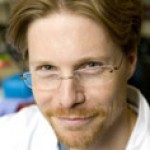Link to Pubmed [PMID] – 24098139
PLoS Genet. 2013;9(10):e1003782
Endosporulation is an ancient bacterial developmental program that culminates with the differentiation of a highly resistant endospore. In the model organism Bacillus subtilis, gene expression in the forespore and in the mother cell, the two cells that participate in endospore development, is governed by cell type-specific RNA polymerase sigma subunits. σ(F) in the forespore, and σ(E) in the mother cell control early stages of development and are replaced, at later stages, by σ(G) and σ(K), respectively. Starting with σ(F), the activation of the sigma factors is sequential, requires the preceding factor, and involves cell-cell signaling pathways that operate at key morphological stages. Here, we have studied the function and regulation of the sporulation sigma factors in the intestinal pathogen Clostridium difficile, an obligate anaerobe in which the endospores are central to the infectious cycle. The morphological characterization of mutants for the sporulation sigma factors, in parallel with use of a fluorescence reporter for single cell analysis of gene expression, unraveled important deviations from the B. subtilis paradigm. While the main periods of activity of the sigma factors are conserved, we show that the activity of σ(E) is partially independent of σ(F), that σ(G) activity is not dependent on σ(E), and that the activity of σ(K) does not require σ(G). We also show that σ(K) is not strictly required for heat resistant spore formation. In all, our results indicate reduced temporal segregation between the activities of the early and late sigma factors, and reduced requirement for the σ(F)-to-σ(E), σ(E)-to-σ(G), and σ(G)-to-σ(K) cell-cell signaling pathways. Nevertheless, our results support the view that the top level of the endosporulation network is conserved in evolution, with the sigma factors acting as the key regulators of the pathway, established some 2.5 billion years ago upon its emergence at the base of the Firmicutes Phylum.

